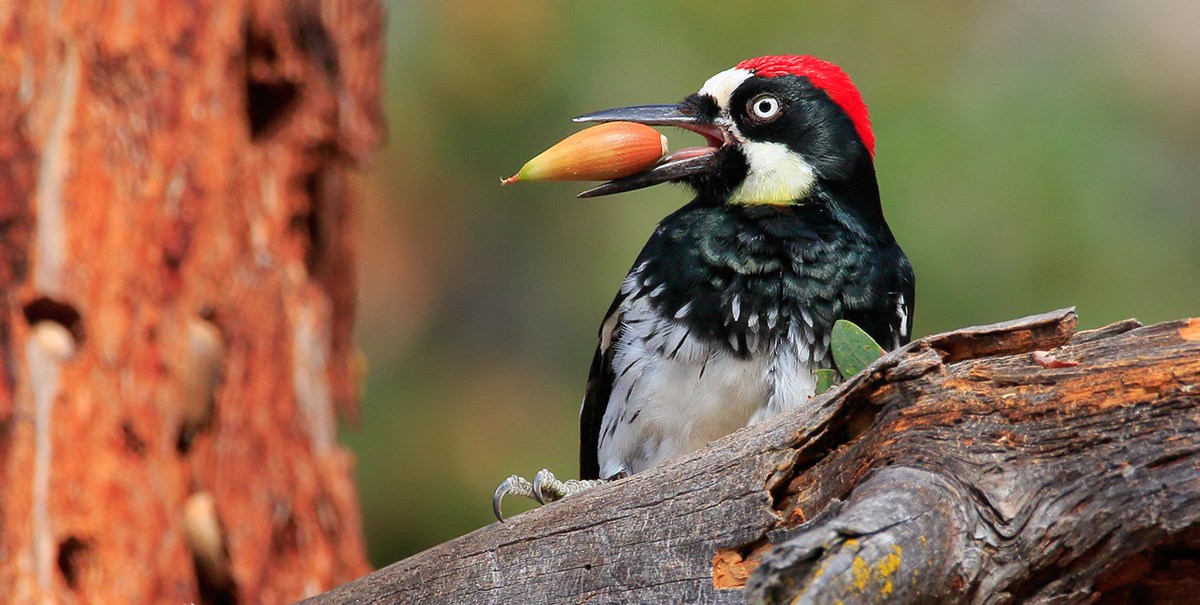Woodpeckers in Florida: Identification Tips and Habitat Preferences
Woodpeckers in Florida: Identification Tips and Habitat Preferences
Blog Article
Revealing the Secrets of Woodpeckers: Habits, Environment, and More
Woodpeckers, with their special habits and specialized adaptations, have long fascinated scientists and nature fanatics alike. By revealing the secrets surrounding woodpeckers' habits and habitat selections, a much deeper understanding of these bird wonders emerges, supplying a glance right into their interesting world.
Woodpecker Actions Insights
In checking out woodpecker habits, a fascinating screen of specialized abilities and adaptations arises, shedding light on their impressive ecological particular niche. Woodpeckers, known for their distinct drumming on trees, possess a range of behavior traits that contribute to their survival and success in their atmosphere.
In addition, woodpeckers display an one-of-a-kind feeding behavior identified by their ability to essence pests from tree bark using their specialized beaks. Their long, barbed tongues help in recording prey, while their solid neck muscular tissues provide stability and accuracy during pecking movements. This feeding method allows woodpeckers to access surprise insect larvae and remove them with remarkable performance.
Habitat Preferences and Choice
What variables influence the habitat choices and selection of woodpeckers? Woodpeckers are extremely versatile birds recognized to inhabit different atmospheres worldwide. Nonetheless, they do show preferences for certain habitat attributes. One important aspect affecting woodpecker environment option is the schedule of ideal nesting websites. Woodpeckers generally choose forests with a mix of mature trees that offer sufficient chances for tooth cavity excavation. These tooth cavities serve as vital nesting and roosting websites for woodpeckers and are necessary for their reproducing success.
Additionally, woodpeckers reveal a choice for habitats with an abundant supply of food resources. They are mostly insectivorous, eating beetles, ants, larvae, and other insects located in rotting wood or tree bark. Woodpeckers often tend to favor wooded locations with a diverse insect populace to satisfy their dietary demands.
Furthermore, the presence of dead or worn out trees is one more key aspect in woodpecker habitat option. These trees not only provide food resources but additionally provide ideal substrate for dental caries excavation. Dead trees are necessary for the maintenance of healthy and balanced woodpecker populations, as they play a crucial role in the woodpeckers' life process and community characteristics.
Feeding Practices and Diet Regimen Composition
Woodpeckers show a specialized feeding behavior concentrated on foraging for insects within different environments. Their diet plan largely includes pests such as beetles, ants, caterpillars, and spiders, which they find by touching on tree bark and listening for the noise of activity inside. Woodpeckers use their strong beaks to pierce into the wood and their lengthy, barbed tongues to extract victim from holes. Along with bugs, woodpeckers additionally eat tree sap, fruits, nuts, and seeds, adding range to More Bonuses their diet regimen depending on the season and schedule of food resources.
The foraging methods of woodpeckers are well-adapted to their arboreal lifestyle. Woodpeckers play an essential role in keeping the health and wellness of forests by regulating insect populaces and helping in the decomposition of timber.
Drumming Seems and Communication
Making use of fast drumming sounds on different surfaces, woodpeckers use an unique form of communication to signal region borders and attract companions. This drumming habits is not only a means of communication yet additionally serves as a means for woodpeckers to develop their presence within a particular area. The strength, speed, and pattern of the drumming can share important information to various other woodpeckers in the location.
Woodpeckers utilize drumming noises to reveal their visibility in a region and to Read Full Report alert off find more prospective burglars. The loud and repetitive nature of the drumming works as a clear signal to other woodpeckers that the location is already declared. This aids in decreasing problems and reducing physical battles between people.

Survival Adaptations and Specialized Anatomy

Conclusion
Finally, woodpeckers show distinct behaviors, such as drumming audios for communication, and have specialized makeup for survival in their selected habitats. Their feeding routines and diet plan composition better demonstrate their flexibility to different environments. By recognizing these elements of woodpeckers, scientists and guardians can better shield and protect these remarkable birds and their environments.
Report this page